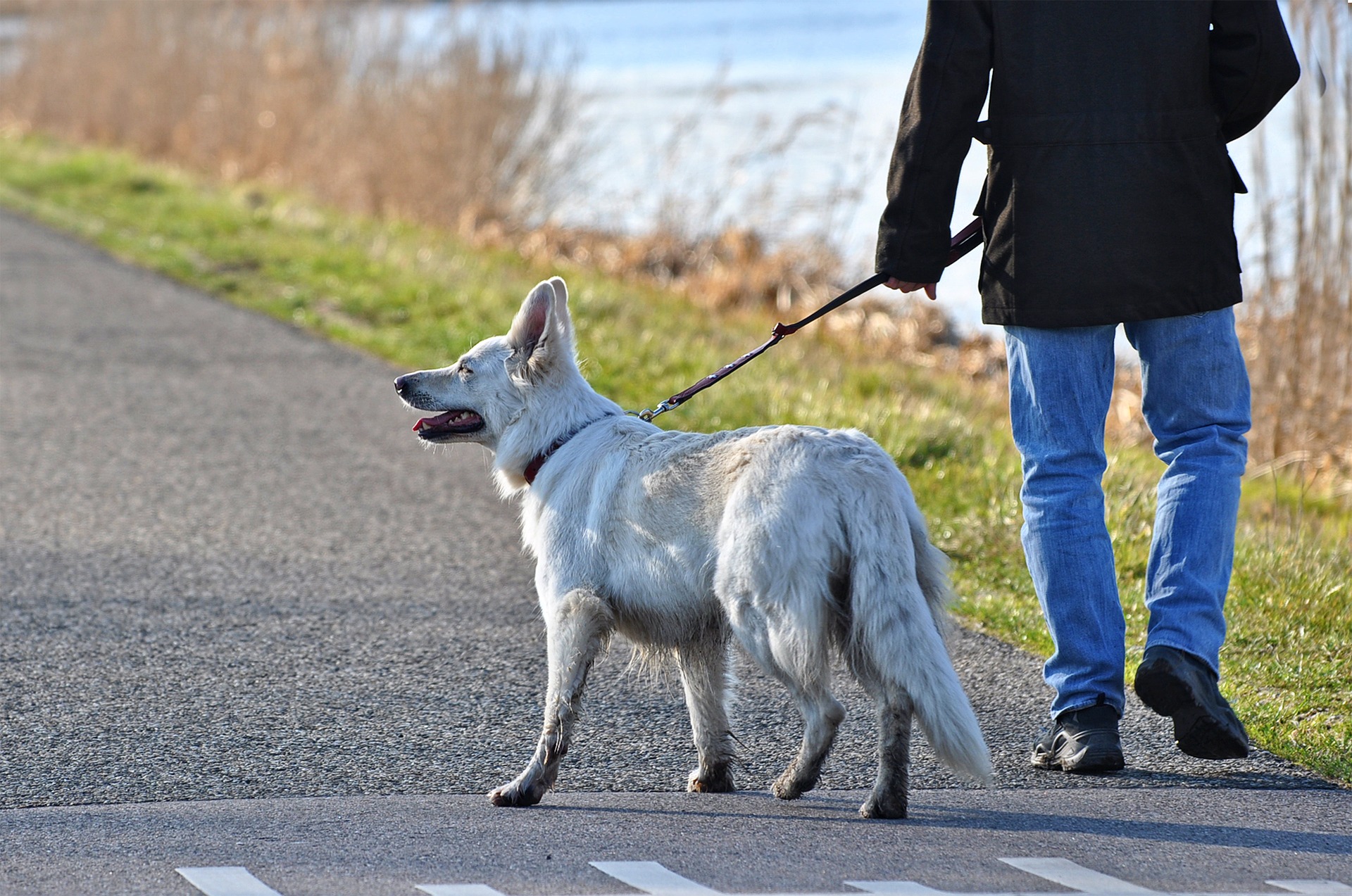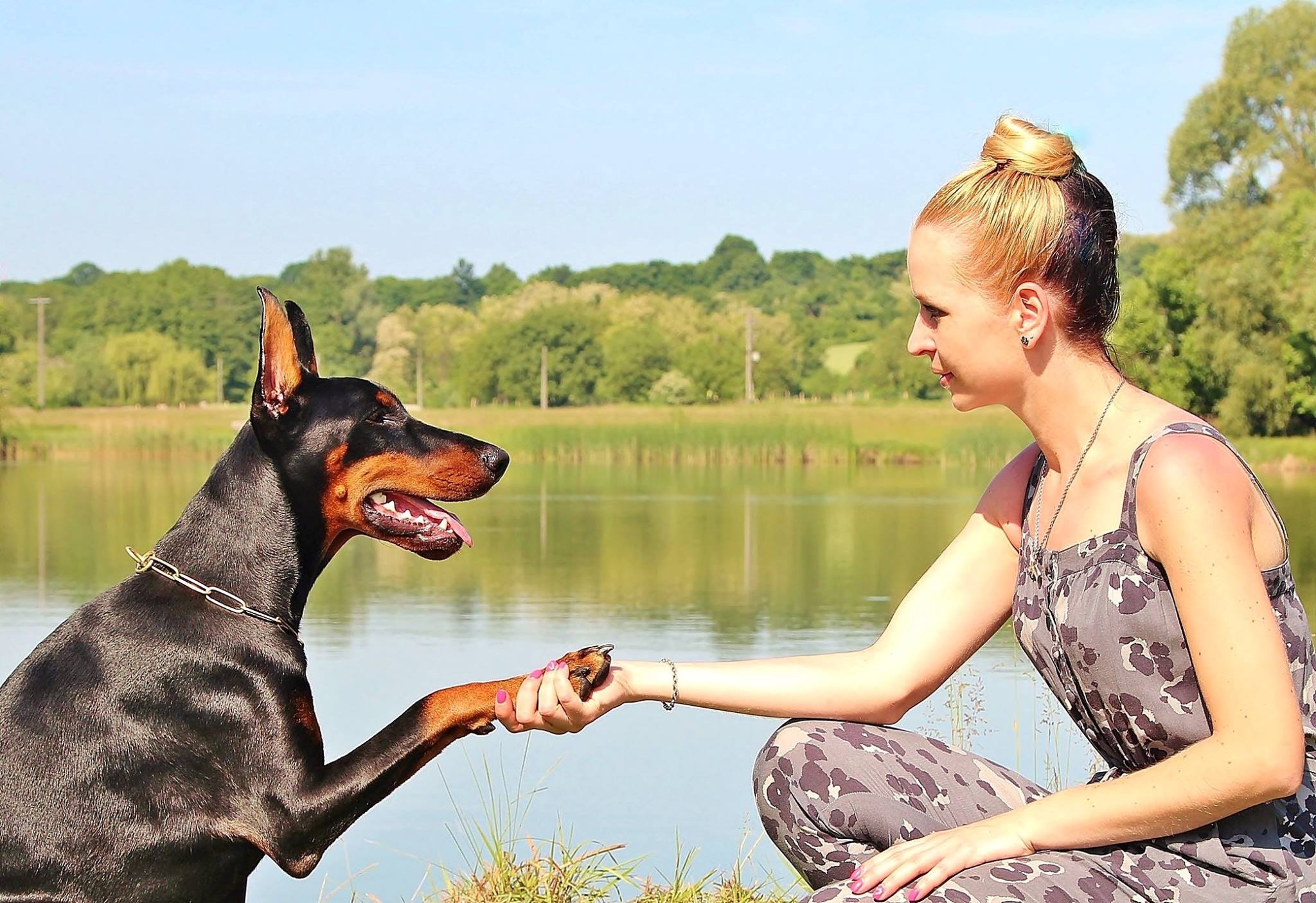I’ll guarantee that if you ask most owners “can you train an old dog”, they’ll probably shake their heads.
“You can’t teach an old dog new tricks,” they’ll say.
“So what’s the point of even trying,” they’ll ask.
Well, do you know what I say? Rubbish.
Saying you can’t train an old dog simply isn’t true. Not even remotely.
And not only CAN you train an old dog, you very much SHOULD.
It might be a little more challenging than training a puppy, but it’s no less do-able and no less worthwhile.
Think about it.
How often do you hear doctors say learning a new skill is one of the best ways of holding back the years? It keeps your mind sharp, your brain engaged, and your interest in life blossoming. The same applies to dogs.
That being said, it’s important to go into the process with realistic expectations.
Teaching an old dog is a very different proposition to training a pup.
They might have cognitive problems, physical difficulties. They’ve probably got a lifetime’s worth of bad habits to ‘unlearn’.
But none of this means it can’t be done.
(Video will open in a new window)
Training Old Dogs Versus Training Young Dogs
If you’ve trained a puppy or two in your time, you might think training a senior dog will be a walk in the park.
But I’ve got news for you. Training an older dog is a very different thing to training a puppy.
A puppy is a bit like a blank slate. Their minds are open, clean, and ready to soak up whatever knowledge you give them.
Unless they’ve packed an incredible amount into a short time, they’ll have no bad habits to unlearn, no bad experiences to forget. Basically, they’re ripe for the picking.
Older dogs, on the other hand…not so much.
Old brains work differently from young ones. It takes longer for the signals to travel, longer for basic things to ‘commute’.
Essentially, old brains aren’t ‘primed’ for learning in the way young ones are. And then there’s the ‘unlearning’ to consider…
A dog who’s managed to get to old age has probably spent a lifetime picking up the kind of habits you’re now desperate to break. But in their minds, they’ve already learned all they need to know and already know how to behave. Teaching them that’s not necessarily the case is no minor matter.
Add to that the fact that some older dogs experience cognitive and physical problems that make learning and performing certain tasks difficult (if not impossible) and it becomes painfully clear that training an old dog is no picnic.
Training a puppy is exactly that… training. Training an older dog is often less about ‘training’ and more about unlearning and re-training.
And that’s not necessarily something that’s going to be easy… not all the time, anyway. But the rewards make it worth it.

The Benefits of Training an Old Dog
Not everyone thinks it’s worth training an old dog. Those people need some training of their own.
Whether you’re refreshing existing skills, teaching new tricks, or embarking on a fully-fledged training program, the effects are the same… and for everyone who loves their dog, those effects are worth their weight in gold.
It Keeps Them Young
Just like people don’t respond well to feeling ‘redundant’, neither do dogs.
By engaging them in training, you’ll effectively be giving them a job to do. And a dog with a job has no chance of feeling redundant.
Simply put, a dog who still feels ‘needed’ is a far happier, healthier dog than one who feels their best years are behind them.
It Improves Your Bond
If your dog seems happy spending their days napping on the sofa, why bother disturbing them?
But unconsciously, you may have fallen into a rut… a rut that means you’re spending a lot less time with your dog than you used to.
Training allows you to re-engage with your dog, to spend some quality (and fun) one-on-one time with your best friend. And who’s going to say no to a bit of that?
It’ll Keep Them in Good Shape
Training stimulates the mind, for sure, but it’s also a great way of introducing some physical activity into your dog’s routine.
Just like us, dogs have a habit of piling on the pounds as they get older.
Giving them something to do that doesn’t involve burying their nose in the food bowl is a great way of keeping the middle-age spread at bay.
They’ll Thank You for It
A positive training program is fun. It’s enriching. It means your dog gets to spend more time with their favorite person (and yes, I mean you).
Basically, training is a ‘Good Thing’. And your dog is going to thank you for it.
Related Post: Quick & Simple Tips For Leash Training An Older Dog

So Can You Train An Old Dog? – Yes, And Here’s How
Given time, patience, and plenty of practice, most senior dogs can be trained in housebreaking, obedience basics, and social skills.
If you’ve had your dog since they were a pup, the task ahead is easier. You’ll know exactly what areas they’ve been trained in, what areas they haven’t, and you’ll have a good understanding of their behaviors and experiences, both of which can help shape their attitude to training.
If you’ve adopted a senior dog, things can be a little trickier. You might not know what their training experiences have been and their background might be ‘patchy’, to say the least.
Either way, knowing where to start with training can be a head-scratcher. But actually, it’s simple enough.
Just begin at the beginning…
Work Out What They Already Know
The number one rule of teaching an old dog? Don’t get ahead of yourself. There’s no point teaching them how to high five if they don’t know how to ‘sit’.
Before you jump into a new training program with all guns blazing, take some time to figure out exactly what your dog does and doesn’t know already.
If you’ve had your dog since puppyhood, you’re already ahead of the game. If you’ve adopted a senior, take some time to work out their starting point by running through the following basic commands with them.
Once you’ve figured out where they already are with their training, you’re good to go.
Make it Easy
An older dog doesn’t necessarily have the time or patience for long, challenging training sessions…
…Especially if that training isn’t really doing what it says on the can.
If you haven’t trained a dog before, whether old, young, or anything in between, it’s easy to fall into the trap of using methods that, for all their good intentions, simply aren’t effective.
Make things easy on yourself (and your dog!) by choosing a training method that actually works. To see what one of those looks like, I’d highly recommend checking out The Easy Way To An Obedient Dog by Doggy Dan. It’s simple, it’s manageable, and best of all, it works.
Keep it Realistic
Just because you’re dealing with a senior doesn’t mean they automatically know the basics.
If you’ve adopted a shelter dog, you could be dealing with an animal who’s never known where their next meal is coming from, let alone been trained to sit on cue.
Training an older dog might mean you’re starting from scratch, just like you would be with a puppy.
But unlike a puppy, a senior is probably a little stuck in their ways. They might even have physical or cognitive difficulties that make mastering basic commands challenging.
If you want the training experience to be rewarding, keep your expectations realistic.
At the end of it, your dog probably won’t be able to jump through a flaming hoop and dance on their back legs. And even mastering basic skills might take some time.
You’re going to experience setbacks along the way. You’re going to have times when you wonder if it’s worth it. But persevere. The results will speak for themselves.
Make Adjustments
Dogs in their golden years often experience the kind of problems younger dogs are blissfully unaware of.
They might struggle with bladder or bowel control; they might need more sleep than they used to. Stiff joints can make moving difficult; their hearing and vision might have lost its sharpness.
None of this means they can’t be trained. It just means you might have to shake up your technique.
First and foremost, find a way to communicate in a way they can understand. If subtle hand gestures go unseen, switch to verbal cues. If soft verbal commands go unheard, speak up, and add a physical cue.
Similarly, make adjustments in what you choose to train them.
A dog with arthritis is unlikely to thank you for teaching them to jump the high bar. And a dog that needs plenty of naps probably isn’t going to appreciate 2-hour training sessions.
Make adjustments where needed, and always remember to keep your dog’s physical and mental needs at the forefront of your mind.
Keep Sessions Short and Sweet
Older dogs tend to tire more easily than younger ones, making short, sweet training sessions crucial to success.
Keep sessions to 10-20 minutes max. If you notice any signs of fatigue, stop for a few hours (or even the day, if needed) to let them rest.

Enroll in an Obedience Class
Regardless of whether you’re starting from scratch or looking to brush up on some existing skills, enrolling your dog in an obedience class is a great idea.
As well as the obvious, obedience classes give your dog the chance to socialize in a safe environment – perfect if they don’t get many opportunities to interact with other dogs normally.
Just remember that classes serve to complement, rather than replace, the training you do at home.
If you need some inspiration to keep your home-training on track, do yourself (and your dog) a favor by checking out Doggy Dan’s free online video series for tips and tricks on how to set your dog on the easy path to understanding.
Be Patient
If there’s one thing older dogs need from you more than anything else, it’s patience.
Mastering basic skills is probably going to take them longer than it would a pup.
They might suffer lots of setbacks or find certain things a struggle to pick up. Getting frustrated with their slow progress is easy, but it’s really not going to do either you or your dog any good.
If you’re dealing with a former shelter dog, it’s even more vital to heap on the patience.
Because if they’ve only been with you a short time, give them time to adjust to their new surroundings and family.
You’ll find it far easier to train a dog that’s had time to bond with you than one that’s still working on building their trust.
Keep It Positive
Any training method that relies on negative corrective measures is guaranteed to do one thing and one thing only: fail.
Regardless of the focus of your training, keep it positive. Training is meant to be a fun experience, not one your dog learns to fear.
Keeping things upbeat and rewarding your dog for each and every achievement isn’t just the most effective means of training, it’s the only one that will strengthen the bond between you.
To understand more about how positive reinforcement beats training methods that use fear or aggression hands down. I’d highly recommend taking a look at The Easy Way To An Obedient Dog Video Course by hitting the video link below…
(Video will open in a new window)
Final Thoughts On Training On Old Dog
If there’s one thing you take away from today’s post, it’s this.
Be patient.
Older dogs aren’t spring chickens anymore. They’re a bit slower, a bit stiffer, and a bit sniffy about trying new things.
But that doesn’t mean training isn’t good for them. Or that they won’t end up enjoying it way more than they thought.
Old dogs CAN learn new tricks. And with a bit of patience, a bit of perseverance, and plenty of good old-fashioned kindness, they’ll have plenty of fun as they do.

